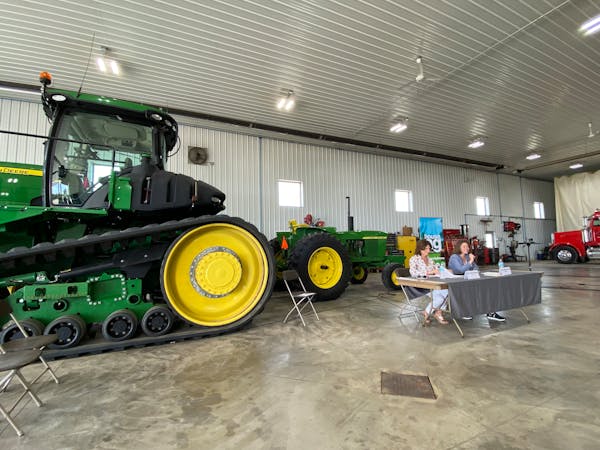A few years ago, Chisago County farmer Max Gustafson needed a way to stop his cattle from wandering into a nearby wetland and polluting it in the process.
What started then with a federal grant to install a 1,350-foot fence has evolved into a series of environmentally friendly practices on Gustafson's farm near Center City, which has been in his family since 1879.
The fence allowed a buffer of plants to spring up naturally between the pasture and the banks of the wetland sprawling from South Center Lake. Then Gustafson planted hay on erosion-prone ground in another section.
And now he's adopted the no-till method of planting on his roughly 300 acres of corn and soybeans — leaving the soil largely undisturbed. The green practices have helped protect the area's water from soil erosion and cow manure.
"The water here in the Chisago Lakes area is a really important resource for everybody," Gustafson said.
Persuading farmers to stop tilling their fields or to maintain buffers between waterways doesn't happen overnight, said Craig Mell, district administrator for the Chisago Soil and Water Conservation District. The district routinely holds field day demonstrations where local farmers talk about what they're doing on their land.
Farm runoff from manure, lost topsoil and fertilizers can pollute lakes and streams and cause algae blooms, as well as taint some rural drinking water wells. It eventually runs into rivers such as the Mississippi, which can carry pollution as far as the Gulf of Mexico. There, algae feast on the nutrient runoff and die, creating an oxygen-depleted "dead zone" every summer.
While all counties in Minnesota have soil and water conservation districts, Chisago County also has a Lakes Improvement District that collects money to protect the waters in its chain of lakes. That local fund has been an important tool to improve water quality, Mell said.
"We've done the door-knocking to start talking to the farmers, talk to the landowners about these projects," Mell said. "In a lot of cases it takes a neighbor to do something first." Gustafson, he added, "has been a great example of a leader."
Gustafson said he first heard about no-till at a field day from another farmer who had used the technique for 15 years.
In the spring, farmers typically plow their fields and turn up black soil so that the ground warms up and readies for planting. But with no-till the ground is left undisturbed, except for the new seed — keeping the soil in place, reducing erosion and helping with water infiltration. The roots of last year's crop stay in the soil and die off, leaving pathways for water to soak in, Gustafson said.
A 2018 review of studies on what pushes farmers to adopt clean-water practices, published in the environmental journal Sustainability, showed that person-to-person interaction was an important factor. "Conservation education can be improved by encouraging more interpersonal contact between conservation agencies and farmers, and the need for farmer-to-farmer communication," the review states.
It also found that financial incentives can encourage early adopters of conservation practices. Mell's office routinely looks for funding from local, state and federal sources to help farmers who may need assistance.
Gustafson has received $156 per acre from a federal program to plant hay on 8 acres to stop erosion, $13.80 an acre in federal money to practice no-till, and about $3,000 in state and local funding toward his fence.
Such incentives are usually tied to contracts that may require farmers to keep water-protecting practices in place for up to 10 years. There's always the possibility they won't persist after the contract ends, Mell said.
But Gustafson said he has no plans to stop. He's found that not tilling his fields in the spring has saved him time and reduced tractor fuel costs, in addition to saving his soil.
The result of Gustafson's efforts and other water quality projects funded by Chisago County's Lakes Improvement District is that both North Center and South Center lakes have been taken off Minnesota's list of impaired waters.
"The work that we're doing is getting good conservation on the ground, which is making a big difference on water quality," Mell said.
Robbinsdale shelter-in-place alert accidentally sent countywide
Developer of St. Paul's Keg & Case food hall declares bankruptcy

Wildlife agency: Sturgeon won't go on endangered species list

Minnesotans interviewed to serve on Feeding Our Future trial

